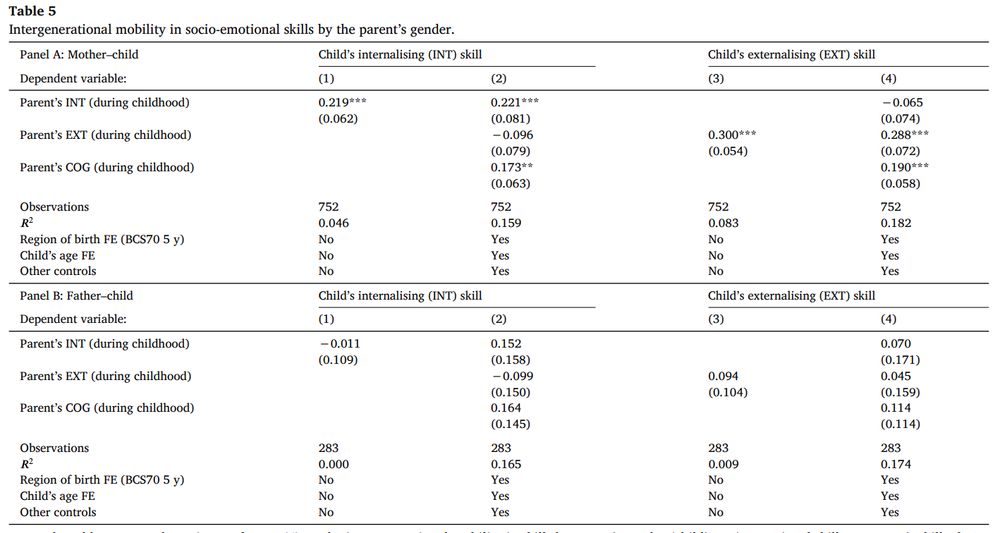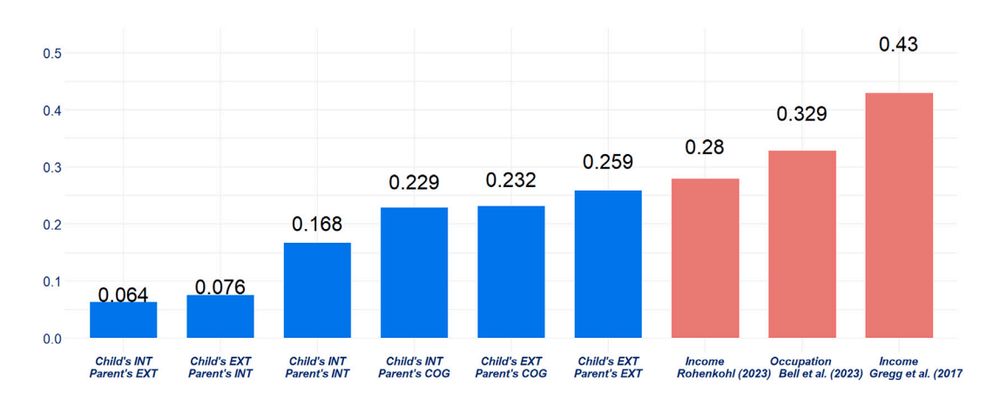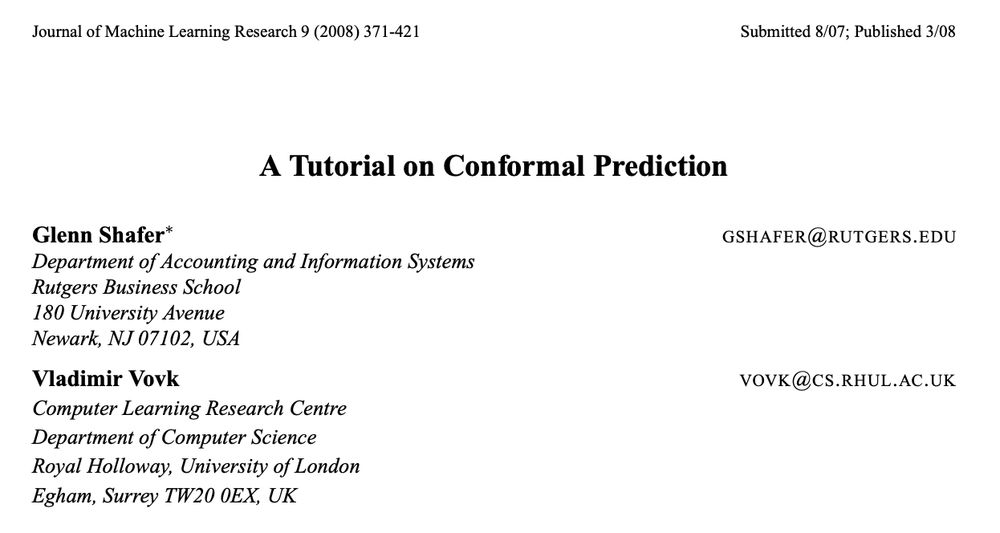Aureo de Paula
@paulaaureo.bsky.social
Professor of Economics at UCL, IFS. East London Carioca. Arsenal and Flamengo!
If this seems interesting to you, check our paper or NotebookLM podcast below!
https://www.sciencedirect.com/science/article/pii/S0047272725001215?via%3Dihub
https://notebooklm.google.com/notebook/6c466a86-a8b3-42f3-b7ab-9e5718596ac1/audio
(7/7)
https://www.sciencedirect.com/science/article/pii/S0047272725001215?via%3Dihub
https://notebooklm.google.com/notebook/6c466a86-a8b3-42f3-b7ab-9e5718596ac1/audio
(7/7)
July 14, 2025 at 11:05 AM
If this seems interesting to you, check our paper or NotebookLM podcast below!
https://www.sciencedirect.com/science/article/pii/S0047272725001215?via%3Dihub
https://notebooklm.google.com/notebook/6c466a86-a8b3-42f3-b7ab-9e5718596ac1/audio
(7/7)
https://www.sciencedirect.com/science/article/pii/S0047272725001215?via%3Dihub
https://notebooklm.google.com/notebook/6c466a86-a8b3-42f3-b7ab-9e5718596ac1/audio
(7/7)
We do much more in the article! For example, we look at further measures of association and discuss our estimation protocol in detail – importantly, both skills and intergenerational regressions are estimated jointly. (6/7)

July 14, 2025 at 11:05 AM
We do much more in the article! For example, we look at further measures of association and discuss our estimation protocol in detail – importantly, both skills and intergenerational regressions are estimated jointly. (6/7)
Interestingly, we also find that mother-child correlations are much higher than father-child! (This relationship remains even after robustness checks for alternative explanations such as different sample sizes.) (5/7)

July 14, 2025 at 11:05 AM
Interestingly, we also find that mother-child correlations are much higher than father-child! (This relationship remains even after robustness checks for alternative explanations such as different sample sizes.) (5/7)
This allows us to measure skills at the same age for parents and children. While correlations are lower than those measured contemporaneously and between other economic variables in related studies, they are still sizeable and significant! (4/7)

July 14, 2025 at 11:05 AM
This allows us to measure skills at the same age for parents and children. While correlations are lower than those measured contemporaneously and between other economic variables in related studies, they are still sizeable and significant! (4/7)
Here, we focus on “internalising” (e.g., focussing drive aothers) skills using the 1970 UK British Cohort Study, which follows all born in the UK on a week in Apr/1970 linking their info w their mums as well as (eventual) kids! (3/7)

July 14, 2025 at 11:05 AM
Here, we focus on “internalising” (e.g., focussing drive aothers) skills using the 1970 UK British Cohort Study, which follows all born in the UK on a week in Apr/1970 linking their info w their mums as well as (eventual) kids! (3/7)
The literature has registered association across several meaningful economic variables and outcomes across generations. Socio-emotional skills are also important! (2/7)


July 14, 2025 at 11:05 AM
The literature has registered association across several meaningful economic variables and outcomes across generations. Socio-emotional skills are also important! (2/7)
We offer simulations and an application using data from the Current Population Survey. If this sounds interesting to you, make sure to check the article! (5/5)
https://arxiv.org/abs/2501.10117
https://arxiv.org/abs/2501.10117
February 10, 2025 at 12:50 PM
We offer simulations and an application using data from the Current Population Survey. If this sounds interesting to you, make sure to check the article! (5/5)
https://arxiv.org/abs/2501.10117
https://arxiv.org/abs/2501.10117
To employ conformal inference, we construct a conformity score function which accounts for the set-valued nature of the outcomes of interest. The procedure accommodates (irreducible) prediction uncertainty, modelling uncertainty due to partial identification and sampling uncertainty. (4/5)

February 10, 2025 at 12:50 PM
To employ conformal inference, we construct a conformity score function which accounts for the set-valued nature of the outcomes of interest. The procedure accommodates (irreducible) prediction uncertainty, modelling uncertainty due to partial identification and sampling uncertainty. (4/5)
To do so we first characterise the shortest prediction interval (or set, more broadly!) in such cases. We then employ “conformal inference” to construct prediction sets with particular finite sample guarantees under censoring while maintaining consistency as the sample size grows. (3/5)


February 10, 2025 at 12:50 PM
To do so we first characterise the shortest prediction interval (or set, more broadly!) in such cases. We then employ “conformal inference” to construct prediction sets with particular finite sample guarantees under censoring while maintaining consistency as the sample size grows. (3/5)
Interval data is pervasive. Surveys usually employ “bracketing” to avoid item nonresponse. Censoring is also present in many contexts. Here, we offer a prediction protocol for outcomes that are interval-valued! (2/5)

February 10, 2025 at 12:50 PM
Interval data is pervasive. Surveys usually employ “bracketing” to avoid item nonresponse. Censoring is also present in many contexts. Here, we offer a prediction protocol for outcomes that are interval-valued! (2/5)
Reposted by Aureo de Paula
Agnes Norris Keiller presented a great paper with @paulaaureo.bsky.social and @johnvanreenen.bsky.social on how we can use data on firms' turnover and employment expectations directly in production function estimation.
www.nber.org/papers/w32725
2/
www.nber.org/papers/w32725
2/

Production Function Estimation Using Subjective Expectations Data
Founded in 1920, the NBER is a private, non-profit, non-partisan organization dedicated to conducting economic research and to disseminating research findings among academics, public policy makers, an...
www.nber.org
November 16, 2024 at 3:11 PM
Agnes Norris Keiller presented a great paper with @paulaaureo.bsky.social and @johnvanreenen.bsky.social on how we can use data on firms' turnover and employment expectations directly in production function estimation.
www.nber.org/papers/w32725
2/
www.nber.org/papers/w32725
2/

